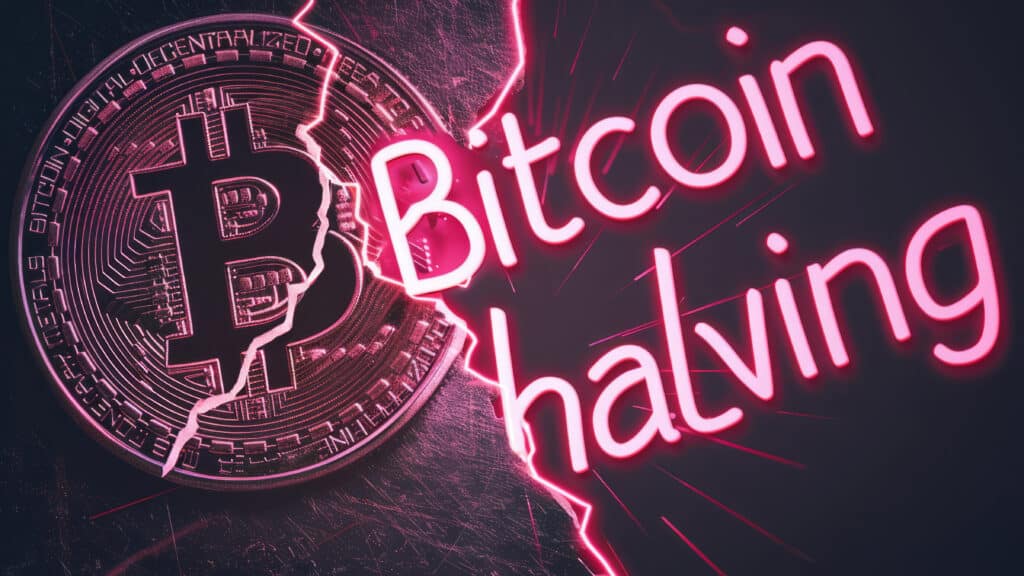
Key Takeaways:
- Historic Halving: The 840,000th Bitcoin block halved miner rewards from 6.25 BTC to 3.125 BTC, marked by a record $2.4 million in transaction fees (37.67 BTC) paid, largely due to transactions involving the new Runes Protocol.
- Runes Protocol Launch: Introduced by Casey Rodarmor, the Runes Protocol allows for inscribing digital assets directly on the Bitcoin blockchain using a UTXO model, differing significantly from the traditional BRC-20 token standard.
- Cultural and Financial Impact: The halving event triggered a surge in blockchain activity and cultural engagement, with intense competition among miners and diverse reactions on social media, highlighting both enthusiasm and skepticism in the community.
On April 20, 2024, a historic milestone was reached in the world of Bitcoin—the mining of the 840,000th block, known as the halving block, which dramatically slashed the miner rewards from 6.25 BTC to 3.125 BTC per block.
This particular block, mined at 12:09 m UTC by Bitcoin miner ViaBTC, turned out to be the most expensive ever due to the record $2.4 million in transaction fees, equating to 37.67 BTC, paid by users.
📈 The current price of Bitcoin stands at $63,837 reflecting a 24-hour increase of 4.69%.#Bitcoin has completed its fourth 'halving' and Bitcoin network transaction fees continue to skyrocket, with some users paying as much as $1,000 in gas!
— CoinW (@CoinWOfficial) April 20, 2024
What's going on? Is this the… pic.twitter.com/PEHMNBkJ48
These unprecedented fees were driven by users’ rush to use the newly launched Runes Protocol for inscribing rare digital assets on the Bitcoin blockchain.
Runes Protocol, introduced by Bitcoin Ordinals inventor Casey Rodarmor, marks a significant evolution from the traditional BRC-20 token standard.
Unlike BRC-20, which utilizes an account model for inscriptions, Runes operates on an Unspent Transaction Output (UTXO) model that allows new tokens to be ‘etched‘ directly onto Bitcoin.
Forget coffee, I can’t even use #Bitcoin to pay for dinner right now…
— Vinny Lingham (@VinnyLingham) April 20, 2024
Yes – that’s a $144 fee to send $100… pic.twitter.com/aIajrhpiUp
The surge in transaction fees was further fueled by enthusiasts eager to inscribe runes and collect rare satoshis, with a frenzy surrounding the opportunity to claim a piece of this unique digital real estate.
Notably, on the same day, aggregated data from mempool.space indicated that $3.82 million in total fees were spent on the five blocks following the halving, not including the miner subsidies, showcasing the intense activity that followed the halving event.
The excitement also extended beyond mere transactions.
#Foundry to Isolate and Monetize #Bitcoin Halving's 'Epic Satoshi,' Distributing Earnings Among Pool Members https://t.co/6LshY7mNAG
— Bitcoin.com News (@BTCTN) April 19, 2024
In the days leading up to the halving, there was considerable competition among Bitcoin mining pools to mine what’s referred to as an “epic” satoshi—the very first satoshi mined on a halving block.
Additionally, financial stakes were high with Trevor Owens of The Bitcoin Frontier Fund offering a hefty bounty of up to $1 million for the privilege of owning the first block mined post-halving.
Open Bounty
— trevor.btc (@TO) April 14, 2024
If anyone can show me a confirmed deal with a major Bitcoin Miner to buy out the first block of the halving for Runes and the Epic Sat
I’m willing to put in up to $500k-$1M, depending on deal structure, DM me
🎁 Like & RT this, will pick 3 winners to gift Ordinals
The halving not only attracted technical and financial interest but also cultural responses.
On social media platform X, the event was marked by both celebration and satire, with trader Hsaka posting a meme that captured the fleeting celebration before returning to the usual business.
happy halving pic.twitter.com/aFuNoYfRan
— Hsaka (@HsakaTrades) April 20, 2024
Meanwhile, Bitcoin critic Peter Schiff provided a more cynical take, suggesting that the halving could lead to a significant decrease in Bitcoin holders’ net worth.
Congratulations Bitcoiners on the #Halving. Are you guys commemorating this occasion by throwing parties tonight? I haven't been invited to any. I think halving is an appropriate name for what's happening as soon #Bitcoin #HODLers will experience a halving of their net worths.
— Peter Schiff (@PeterSchiff) April 20, 2024
This record-setting block underscores the vibrant and often speculative nature of the Bitcoin ecosystem, especially at a time when new technological innovations like the Runes Protocol are merging with cultural narratives and financial speculation in the crypto space.

